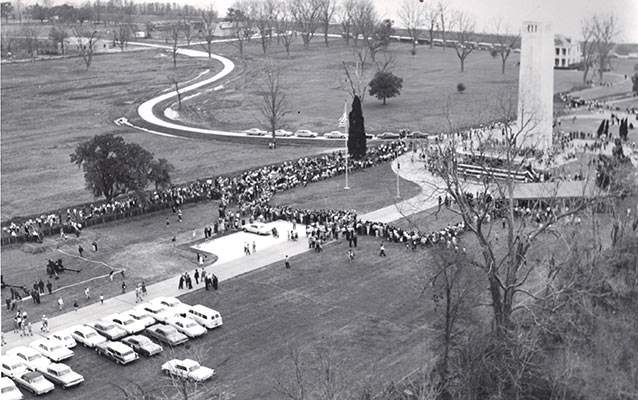Last updated: December 3, 2021
Place
Fazendeville

NPS Photo
When the smoke of the battle cleared, and the bodies returned to the earth, life went on at the site of the Battle of New Orleans. The plantation of Ignacio de Lino de Chalmet shuttered, and the land changed hands a number of times, by 1870 belonging to free man of color and grocer of New Orleans Jean-Pierre Fazende. Although this swampy land lacked even a road connecting it back to New Orleans, it had two notable features: cheap land and seclusion from the post- Civil War race tensions increasingly plaguing the city. Fazende divided his land into 33 lots and sold it off. And so the community of Fazendeville was born.
These humble blocks were bought up by free people of color and emancipated slaves following the Civil War. Unable to come by their 40 acres and a mule, the settlers were content enough with a small parcel to build a modest home. Fazendeville was a small but thriving, self-sufficient community with rich social and cultural traditions, and a heavy emphasis on community. Referred to simply as “the Village” by its residents, Fazendeville had grocery stores, a baseball diamond, two churches, a one-room school, and a few dozen homes. The Village thrived through the struggle of Jim Crow, through the Great Migration that dissolved so many southern communities such as it, and through a barrage of floods and storms that threatened to wash it away. But sandwiched between Chalmette Monument and the National Cemetery, situated on the hallowed ground of Chalmette Battlefield, this peace did not last.
What stories have value? Whose history will be preserved? What knowledge is sacrificed in making those choices? Lyle K. Linch was the superintendent of Chalmette in 1961, as the National Park Service prepared to commemorate the sesquicentennial of the War of 1812. Located in the middle of the Battle of New Orleans battlefield, Fazendeville was an anachronism (something out of its time) for visitors learning about Chalmette Battlefield’s significance in the War of 1812. Linch and others thought that the community should go in order to enhance the sesquicentennial commemoration, and in 1960s Louisiana, people of color had few rights and the civil rights struggle the community was embroiled in was not yet considered history worth preserving.
What decision would we make today? How do you balance the needs of one community over another? What happens when a compromise cannot be reached?
For the sake of the sesquicentennial, the government decided to tear down Fazendeville in 1963 and restore the battlefield to an approximate 1815 appearance. When the sun rose on January 8, 1965, the 150th anniversary of the Battle of New Orleans, it revealed a field which would have been vaguely reminiscent to a solider from 1815, but completely unrecognizable to a resident from the year before.
The choice to preserve one history sacrificed another. While we may be able to better visualize the experience of soldiers during the War of 1812 as a result of this choice, it leaves us less able to appreciate the struggles and triumphs of later generations, and less aware of the complex layers that make up our shared history. Today, only a slight depression is visible in the battlefield where the street that ran through Fazendeville was laid. Yet, for those who know Fazendeville, imagination brings that dip to life with the bustle of residents heading to church, children playing stickball in the street, and the chatter of neighbors on front porch swings. Fazendeville lives on as a memory.
